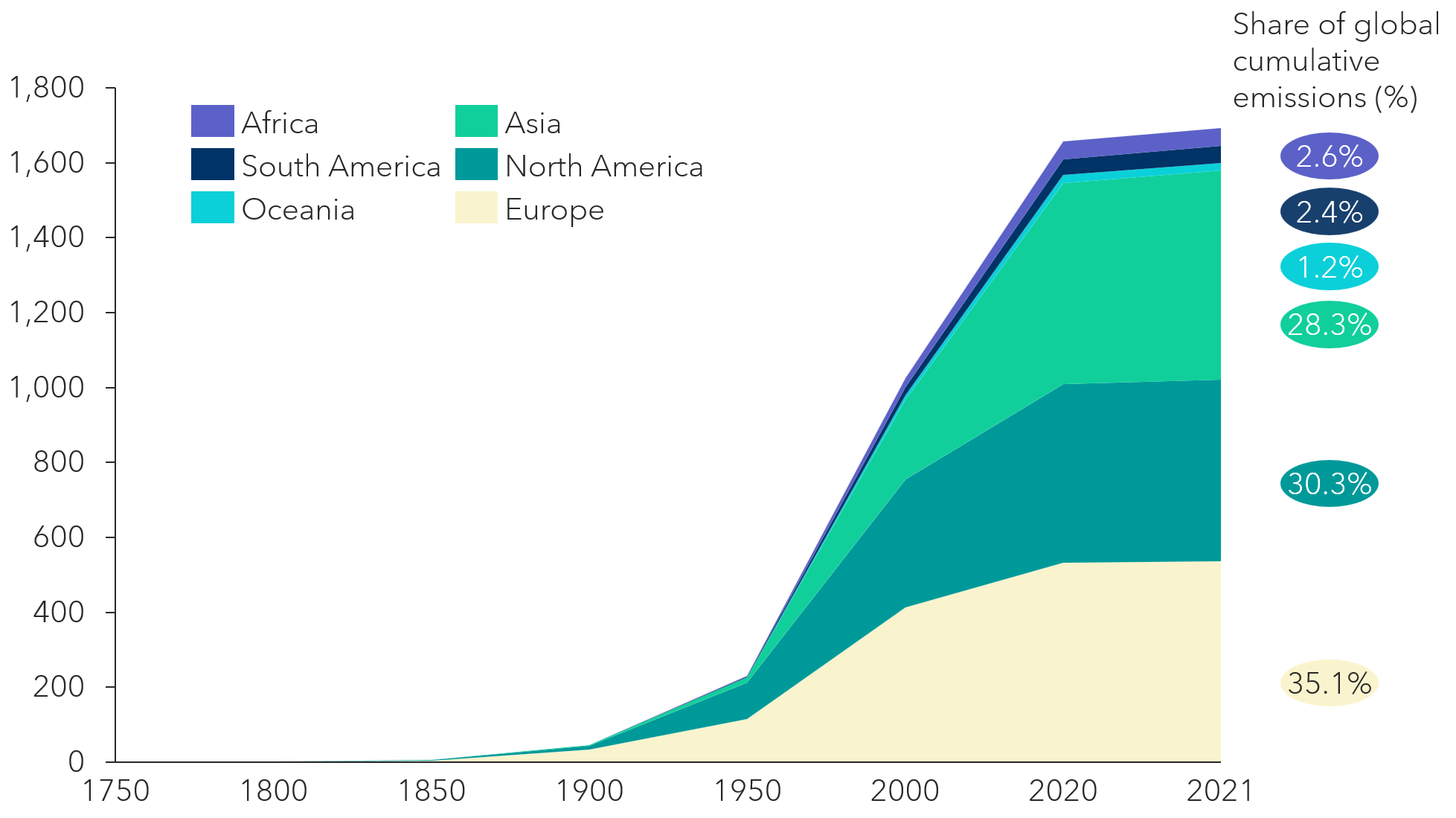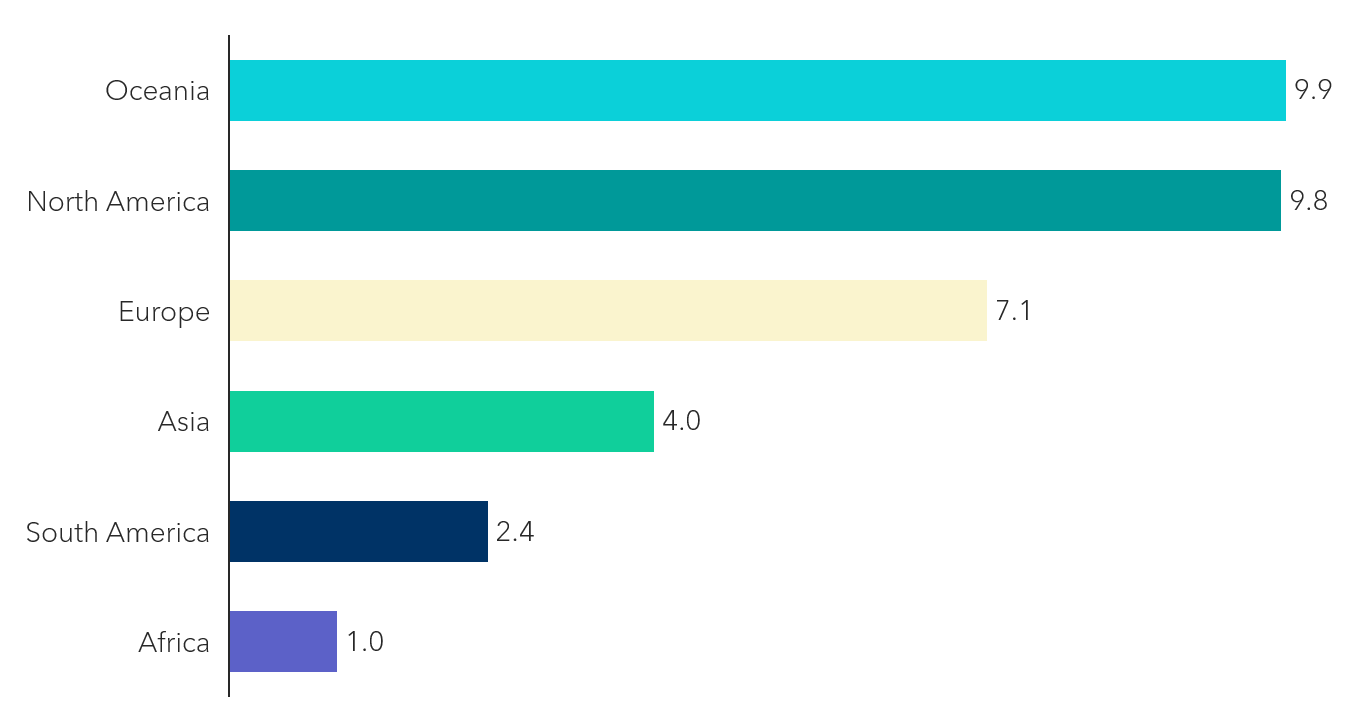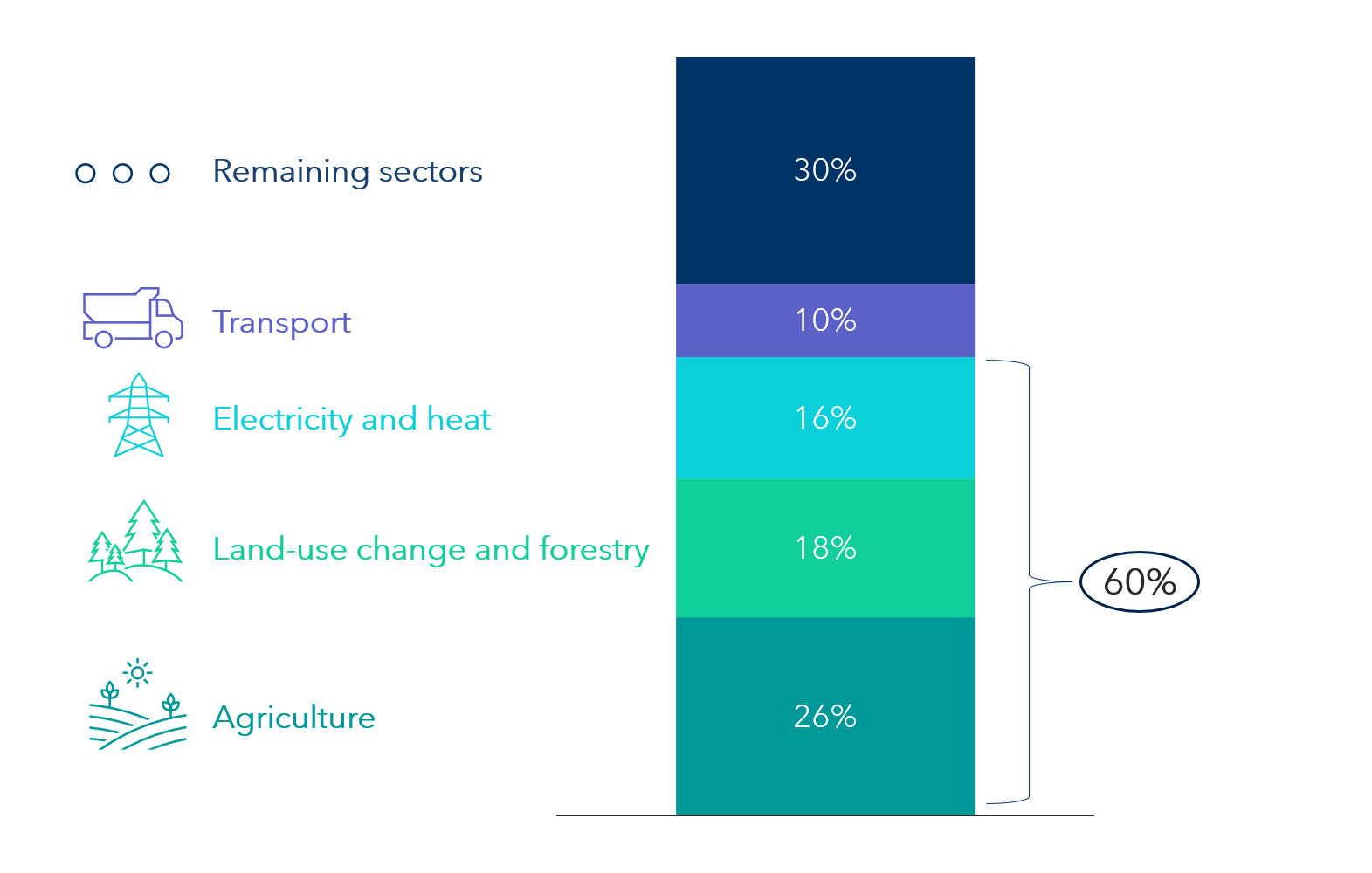
Copyright © 2023 Telesto Strategy LLC, All rights reserved.
To date, traditional narratives within the climate conversation have often focused on the Global South’s contributions to mitigating climate change often while excluding the perspectives of low-income, marginalized communities and ignoring the fact that they frequently bear the brunt of the climate crisis’ impact while having contributed little to its causes.
Africa, which has been responsible for less than 3% of global cumulative CO2 emissions since 1750, stands out in this regard. Despite Europe and North American cumulatively contributing 2.5 and 2.0 billion tons more than Africa, respectively, over this time period, African nations and their citizens have increasingly felt the devastating environmental, social, and economic impacts of climate change. Furthermore, today, the average African produces 10 times less CO2 per year than the average citizen of North America or Oceania and 7 times less than than the average European.
Cumulative global CO2 emissions by region, 1750-2021 (billions of tons)

SOURCE: Our World in Data
From cyclones affecting millions of people in Mozambique, southern Malawi, and eastern Zimbabwe to droughts like the ongoing 40-year drought in the Sahel and the Horn of Africa causing extreme food and water insecurity to tens of millions, Africans have been disproportionately placed at the center of climate change’s devastating effects relative to their contributions to the problem. Furthermore, with 86 of the world’s 100 fastest growing cities in Africa and at least 79 African cities deemed to be at “extreme risk” from climate change, the potential for ever larger generations of Africans being born into geographies which are highly affected by climate change continues to grow.
Per capita CO2 emissions by region, 2021 (tons per person)

SOURCE: Our World in Data
To help counteract the undeserved impact that climate change is having and will continue to have on Africa, those nations most responsible (namely, those in the Global North) must critically assess how they can mitigate the impacts and be forward-looking in solving the climate crisis.
One especially high-potential solution worth exploring is climate finance. As noted in our “Connecting Climate Capital to African Enterprises” report, climate finance is “local, national, or transnational financing – drawn from public, private, and alternative sources – that seeks to support mitigation and adaptation actions that will address climate change”. Within the pan-African ecosystems, an estimated 2.8 trillion U.S. dollars in climate capital is needed between 2020 and 2030 for climate projects to either address climate mitigation or adaptation, but the need does not match the flows, with Africa receiving less than 5% of global climate investments in 2021. And all this despite a pledge from wealthier nations of $100 billion in financial support to African nations for climate change adaptation by 2020, funding fell $20 billion short.
However, across the African climate economy, opportunities for climate-focused investment exist across many fronts. To begin with, 3 main sectors account for 60% of Africa’s already meager GHG emissions: agriculture, land use change and forestry, and electricity and heat. In all 3 of these sectors, low-hanging opportunities to support climate mitigation or adaptation are ample:
Share of African greenhouse gas emissions by sector, 2019 (% of total)

SOURCE: Our World in Data
But reducing African’s already modest emissions is only part of the equation. Home to some of the largest and most critical carbon sinks in the world, including the Congo Basin, Africa also offers a tremendous opportunity to invest in the sequestration of global emissions. This is especially true today when portions of critical African biospheres which sequester carbon are under threat.
Indeed, the Democratic Republic of Congo recently announced an oil auctioning of large stretches of its land, including the peatlands (Earth’s second largest rainforest reservoir of carbon) and the largest gorilla sanctuary. With the stated goal for the auction being to earn revenue to finance government poverty reduction programs, this example paints a somber picture of the tradeoff between economic development and the environment. However, if climate financing could be directed towards projects focused on incentivizing African governments to protect and restore critical ecosystems, such as the Congo River peatlands (the progress of the African Forest Landscape Restoration Initiative in Malawi offers a strong example of a successful model for this), it could be a win-win for investors, African governments, and local communities, all the while protecting the climate stability offered by these critical ecosystems.
Supporting the redirection of global climate capital towards the continent will also require building up the capabilities of the public and private sectors in Africa to welcome investment flows. Indeed, in a recent survey conducted by the African Private Equity and Venture Capital Association, 71% of investors cited a lack of investment-ready, risk-adjusted, and climate-resilient projects as being the most critical barrier to more climate investment in Africa. Addressing this perception requires more than just writing op-eds (such as this one): it requires fostering a pipeline of African entrepreneurs who can develop the projects investors seek out. To this end, Telesto Strategy, in partnership with Academic City University College, U.S. Department of State Office of Global Partnerships and Coalition for Climate Entrepreneurship (CCE), and Aspen Network of Development Entrepreneurs (ANDE), has launched a Climate Tech Accelerator in Ghana. Through the 15-week Accelerator Program, participating entrepreneurs will build up the critical capabilities to propel their next wave of growth and drive meaningful contributions to addressing climate change in Africa.
